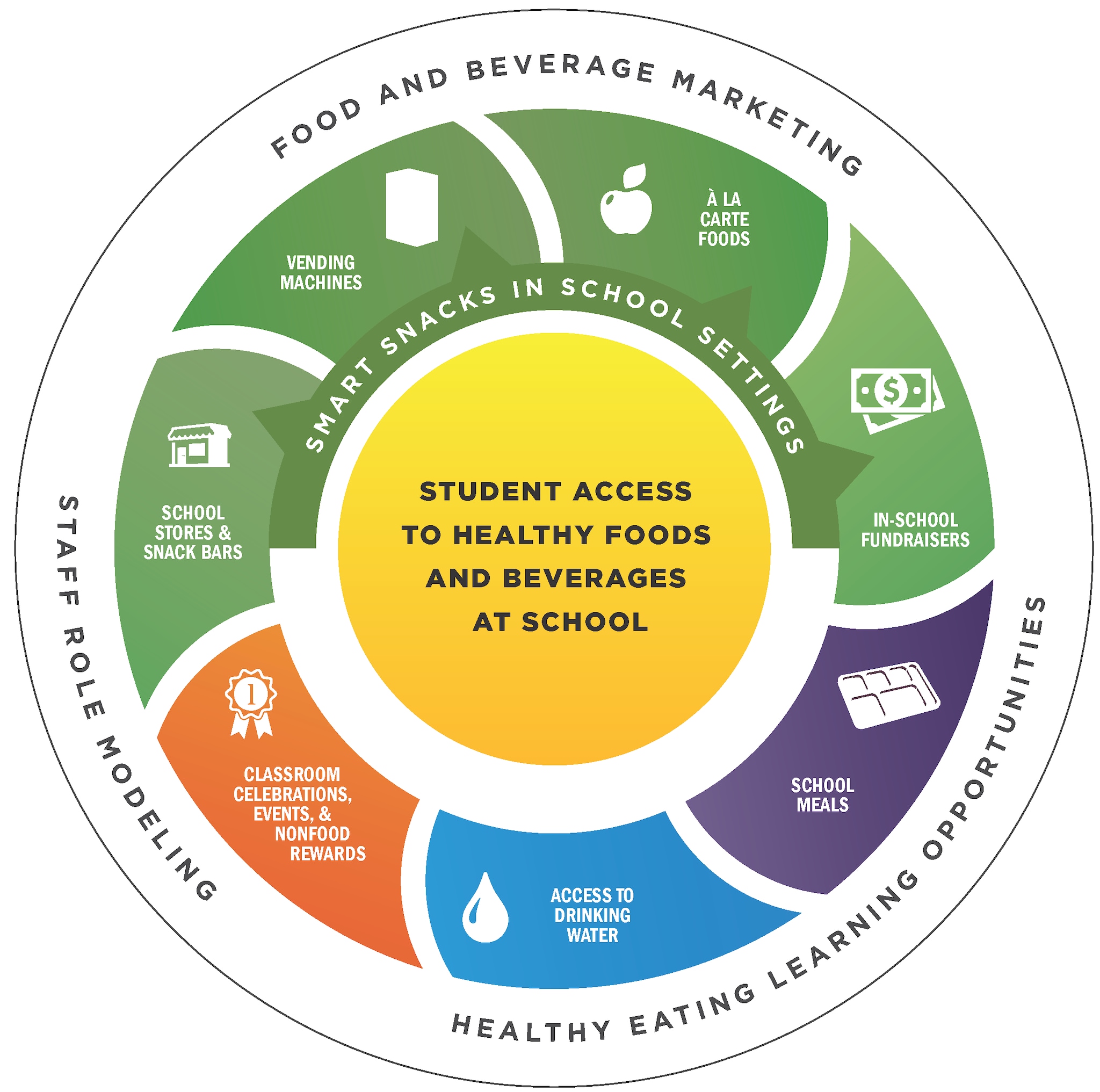School Nutrition

Figure 1. Components of the School Nutrition Environment and Services Click to Enlarge |
Most US children attend school for 6 hours a day and consume as much as half of their daily calories at school. The school nutrition environment and services are part of the Whole School, Whole Community, Whole Child (WSCC) model and can help shape lifelong healthy eating behaviors.
CDC recommends that schools implement policies and practices to create a nutrition environment that supports students in making healthy choices. A healthy school nutrition environment provides students with nutritious and appealing foods and beverages, consistent and accurate messages about good nutrition, and ways to learn about and practice healthy eating throughout the time children spend on school grounds—including before- and after-school.
To learn about the benefits of healthy eating and diet and academic performance visit Childhood Nutrition Facts. Additionally, to learn more about how schools can address energy drink consumption and other energy drinks facts, visit our energy drinks page. For information on how school nutrition policies and practices can support the social and emotional climate (SEC) in schools and social and emotional learning (SEL), visit School Nutrition and the Social and Emotional Climate and Learning.
This CDC framework [PDF – 2MB] describes the components of a school nutrition environment and how, together, they influence a student’s access to healthy foods and beverages at school.

